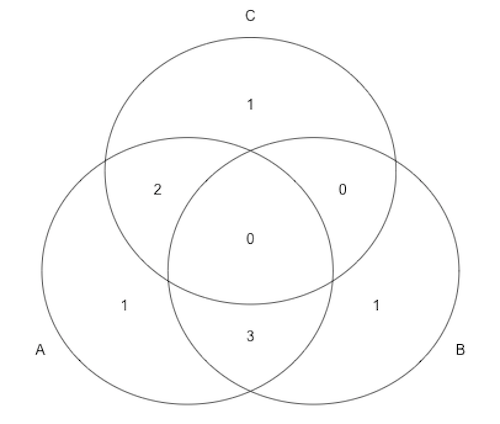Gplots Venn
We can draw a simple Venn diagram of the sets (two or more) by calling the function venn from the gplots. See the script below for example calls: See the script below for example calls. Author radiaj Posted on June 21, 2016 Categories gplots, R, VennDiagram Tags GeneLists, Genes, R, VennDiagram 1 Comment on Working with Venn Diagrams Search Recent Posts.
The gplots package provides Venn diagrams for up to five sets. Its input is a table that is produced by another function. The function venn() calls one after the other and is the only one to be seen by the user. The venn() function accepts either a list of sets as an argument, or it takes a binary matrix, one column per set, indicating for every element, one per row, the membership with every set.
The names of columns or the list elements are the set names. To squeeze extra circles in, those circles need to become ellipses. This works for four sets and maybe even more impressively also for five.
Further reading
gplots

| # Imagine you have more than two sets and you would want to find the overlapping elements in different sets |
| # and you would like to see the overlap using VennDiagram |
| require(VennDiagram) |
| library(gplots) |
| library(reshape2) |
| # We have three different dataframes with the customer-id as Key, and some additional fields |
| set1=data.frame(Key= c(100,200,300), place= c('NY','IS','AZ')) |
| set2=data.frame(Key= c(200,300,400), val2= c(12,12,53)) |
| set3=data.frame(Key= c(200,500,600), val3= c(134,353,23)) |
| # create a list with the key from the three sets |
| input=list(A= unique(set1$Key), |
| B= unique(set2$Key), |
| C= unique(set3$Key)) |
| #1 View VennDiagram with the internal binary group labels |
| # binary group labels 100 - indicates present in A, not in B and not in C |
| venn(input, show.plot=FALSE) |
| # the various overlapping areas are called intersections |
| groupcount<- venn(input, show.plot=FALSE) |
| # view the customers in various intersections |
| print(groupcount) |
| #2 List the customers who are common in all the sets - choose the corresponding intersection |
| print('customers who are common in all the sets :') |
| attr(groupcount, 'intersections')$`A:B:C` |
| #3 Get the number of customers per intersection |
| print('number of customers per intersection :') |
| sapply(attr(groupcount, 'intersections'),length) |
| #4 View which customer belongs to which intersection |
| # there are two different ways to do this, using base function and using reshape2::melt |
| print('List of customerid with their corresponding intersection :') |
| customers= attr(groupcount, 'intersections') |
| # One method - using base functions |
| print('using base function') |
| data.frame(Pattern=rep(names(customers),sapply(customers,length)),customerid=unlist(customers)) |
| # Use reshape2 and melt which has a method melt.list |
| print('using reshape2::melt') |
| CustPattern=reshape2::melt(customers) |
| CustPattern=plyr::rename(CustPattern, c('value'='Customerid', 'L1'='Intersection')) |
| print(CustPattern) |